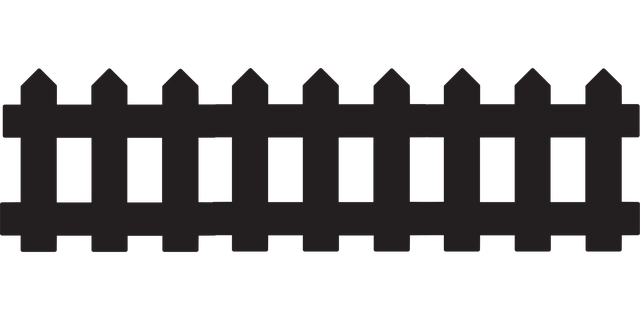Large properties present unique fencing challenges, demanding robust solutions that balance aesthetics with affordability. This article delves into cost-effective fencing solutions tailored for expansive landscapes, exploring alternatives to conventional options. We dissect traditional fencing costs and limitations, offering insights on promising alternatives. Furthermore, it guides readers through material choices, installation strategies, and maintenance tactics to optimize budget and lifespan. By the end, you’ll be equipped with knowledge to make informed decisions for your large property’s fencing needs.
- Understanding Large Property Fencing Needs
- Traditional Fencing: Costs and Limitations
- Cost-Effective Alternatives: A Look at Options
- Material Considerations for Longevity and Budget
- Installation Tips for Efficient Cost Savings
- Maintenance Strategies to Prolong Fence Lifespan
Understanding Large Property Fencing Needs
Fencing large properties presents unique challenges compared to smaller plots. The primary consideration is durability and strength to withstand potential damage from wildlife, extreme weather conditions, or accidental impacts. Given the scale, cost-effectiveness becomes a paramount concern for property owners. Traditional fencing materials like wood may require frequent replacement due to rot or damage, leading to long-term financial burden.
Large properties often demand fences that offer both aesthetic appeal and practical functionality. Security is another critical aspect, especially in rural areas where homes are spaced apart. The ideal solution should balance these needs while being economical. Innovative materials such as vinyl, composite, or high-strength metal alloys can provide durable, low-maintenance alternatives to conventional wood fencing, catering to the specific requirements of expansive landscapes.
Traditional Fencing: Costs and Limitations
Traditional fencing methods have long been the go-to option for property boundaries, offering both privacy and security. However, when it comes to large properties, these conventional options can be expensive and come with certain limitations. The cost of traditional fencing increases significantly with property size due to the extensive materials required—posts, rails, and panels—and labor costs involved in installation.
Additionally, traditional fences often require regular maintenance, such as painting or repairing damaged sections, which adds further expenses over time. In terms of limitations, these fences can be less aesthetically appealing for expansive areas, and their structural integrity may suffer due to wind or other environmental factors, especially if not properly anchored. Moreover, traditional fencing might not provide the level of security needed for large, remote properties, as they can be relatively easy to scale or navigate around.
Cost-Effective Alternatives: A Look at Options
When it comes to fencing large properties, traditional methods can be both expensive and time-consuming. However, there are numerous cost-effective alternatives that offer durability, security, and aesthetics at a fraction of the price. One such option is chain link fencing, which provides a robust barrier while being highly affordable. Its versatility allows for various designs, from simple straight lines to more intricate patterns, suiting different property styles.
Another popular choice is wood fencing, known for its natural beauty and ability to enhance curb appeal. While initial installation costs can be higher, wooden fences require minimal maintenance over time. Vinyl fencing is another budget-friendly option, offering a wide range of colors and styles to match any preference. Its low-maintenance nature and resistance to rot make it an excellent long-term investment for large properties.
Material Considerations for Longevity and Budget
When considering fencing solutions for large properties, material selection is a balancing act between longevity, budget, and aesthetics. Opting for durable materials such as steel or high-density vinyl can significantly extend the fence’s lifespan, reducing maintenance costs in the long run. These materials are resistant to rot, rust, and damage from harsh weather conditions, ensuring your investment remains robust.
While initial costs may be higher for premium materials, they offer better value over time. Cheaper alternatives might require frequent repairs or replacements, ultimately escalating expenses. Material considerations should also align with your property’s unique needs, such as privacy, security, or aesthetic appeal, to ensure the chosen fencing solution meets both functional and visual expectations without compromising affordability.
Installation Tips for Efficient Cost Savings
When installing fencing for large properties, strategic planning can significantly reduce costs. One efficient approach is to group fence installations in phases rather than all at once. This allows for more manageable labor and material expenses. Additionally, choosing local or recycled materials can save on transportation and production costs.
Prioritize areas with high visibility or security risks first, as these sections may require stronger or more complex fencing. For expansive open spaces, consider a mix of solid and mesh fencing to balance privacy and cost-effectiveness. Regular maintenance, such as repairing damaged sections promptly and cleaning the fence regularly, can also extend its lifespan, avoiding unnecessary replacement costs.
Maintenance Strategies to Prolong Fence Lifespan
Regular cleaning and inspection are key to maintaining your fence’s longevity. Removing any debris, such as leaves or twigs, prevents rot and damage, especially in wooden fences. A simple pressure wash can effectively clean most surfaces, removing dirt and grime build-up. Additionally, checking for loose posts, panels, or hinges allows for quick repairs, preventing further deterioration.
Painting or sealing your fence regularly offers extra protection against the elements. This is particularly important for metal fences, which may require rust-prevention treatments. For wooden fences, a fresh coat of paint or sealant can extend its life by shielding it from moisture and UV rays. Implement these simple maintenance practices to ensure your fencing solution remains effective and aesthetically pleasing over time.
